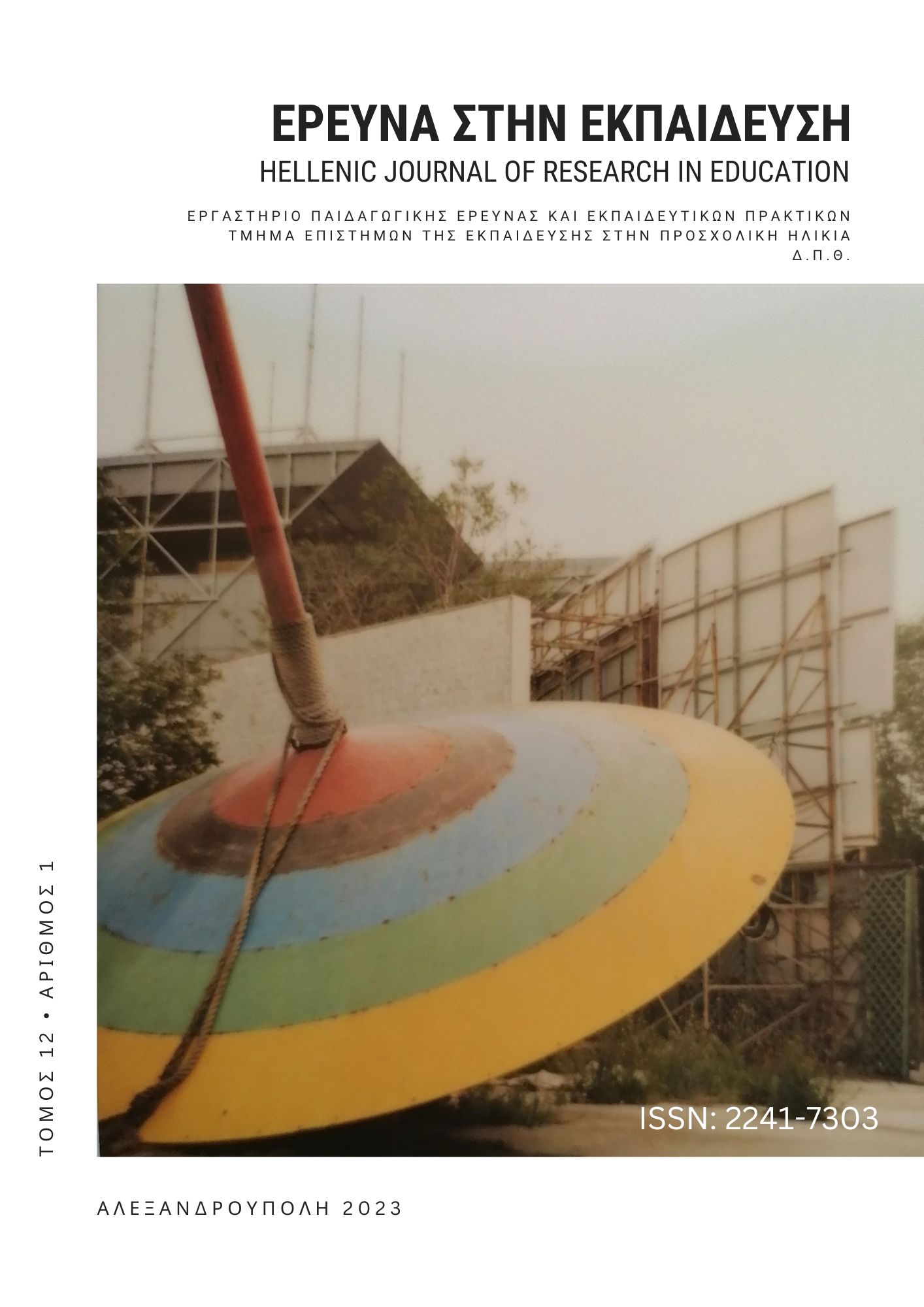Η σχέση της πολυδυναμικότητας και της αυτοαποτελεσματικότητας στα χαρισματικά παιδιά ηλικίας 15-18 στην Ελλάδα

Περίληψη
Η έρευνα αποσκοπεί στην ταυτοποίηση των χαρακτηριστικών της πολυδυναμικότητας στην Ελλάδα, στην επίδραση των δημογραφικών στοιχείων στην μεταβλητή και στην εκτίμηση της σχέση της πολυδυναμικότητας και της αυτοαποτελεσματικότητας στα χαρισματικά παιδιά ηλικίας 15-18. Στην έρευνα συμμετείχαν 103 χαρισματικά παιδιά από τους συλλόγους Mensa και τον Σύλλογο γονέων και κηδεμόνων χαρισματικών και ταλαντούχων παιδιών. Από τα αποτελέσματα, προέκυψαν υψηλά επίπεδα γενικευμένης αυτοαποτελεσματικότητας. Ο Κοινωνικός τύπος επαγγελματικών ενδιαφερόντων βρέθηκε ως επικρατέστερος ακολουθούμενος από τον Πρακτικό και τον Καλλιτεχνικό τύπο. Από τους παράγοντες στατιστικά σημαντική σχέση με την πολυδυναμικότητα βρέθηκε να έχει ο τύπος σχολείου και η ηλικία.
Λεπτομέρειες άρθρου
- Πώς να δημιουργήσετε Αναφορές
-
Σαμψωνίδης Δ. (2023). Η σχέση της πολυδυναμικότητας και της αυτοαποτελεσματικότητας στα χαρισματικά παιδιά ηλικίας 15-18 στην Ελλάδα. Έρευνα στην Εκπαίδευση, 12(1), 1–19. https://doi.org/10.12681/hjre.31619
- Τεύχος
- Τόμ. 12 Αρ. 1 (2023)
- Ενότητα
- Άρθρα

Αυτή η εργασία είναι αδειοδοτημένη υπό το CC Αναφορά Δημιουργού – Μη Εμπορική Χρήση – Παρόμοια Διανομή 4.0.
Τα πνευματικά δικαιώματα των άρθρων του περιοδικού ανήκουν στους συγγραφείς. Τα άρθρα διατίθενται με άδειες Creative Commons CC-BC-SA 4.0


